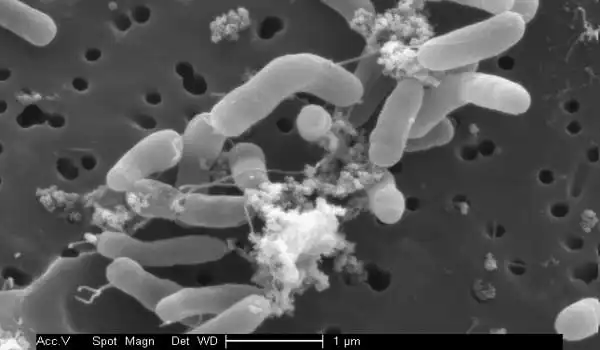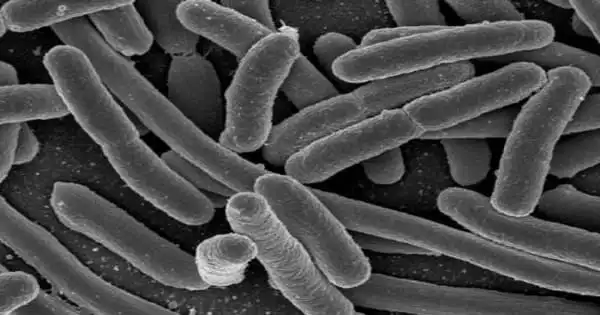The genes present in a microbial community can predict the community’s dynamic metabolic activity, according to a new study by ecologists at the University of Chicago, with implications for the nitrogen cycle and other important biogeochemical processes.
The study, published in Cell, demonstrates that the metabolic genes in a community can predict its dynamic behavior, raising the possibility that scientists could infer metabolite dynamics from the community’s aggregate gene content, design microbial communities for specific functions, and learn how genome evolution influences metabolism.
We frequently think of bacteria in terms of how individual species affect the human body. Streptococcus can cause a sore throat and fever, and eating too much of the wrong type of E. coli can cause food poisoning. However, the natural world is teeming with bacteria that perform a variety of critical environmental functions, such as photosynthesis to fix carbon and produce oxygen, or pulling nitrogen from the atmosphere and converting it into a form that other organisms can use. However, these bacteria do not exist in a vacuum in nature; they exist in ecological communities, interacting with countless other microbes and competing for and swapping nutrients with one another.
Microbial communities are complex because organisms are constantly sensing and responding to their environments, interacting, and co-evolving. The relationship between community gene content and metabolic activity was much simpler than we previously thought possible.
Karna Gowda
This complexity, according to Karna Gowda, Ph.D., a postdoctoral scholar in the Department of Ecology & Evolution and the Center for Physics of Evolving Systems at UChicago and the lead author of the new study, poses a difficult problem for scientists. “Microbial communities are complex because organisms are constantly sensing and responding to their environments, interacting, and co-evolving,” he explained. “It’s a long-standing issue in the field of microbial ecology. How do you make sense of a community’s aggregate metabolic activity based on the simple parts that are present (genes and organisms)?”
Gowda and his advisors, Seppe Kuehn, Ph.D., Assistant Professor of Ecology and Evolution at UChicago, and Madhav Mani, Ph.D., Assistant Professor of Engineering Sciences and Applied Mathematics at Northwestern University, were inspired to tackle this problem by recent studies indicating strong statistical relationships between metabolites present in an environment and community gene content.
Because metabolite levels in natural environments are the result of a give and take between a community and its non-living chemical and physical components (e.g., photosynthetic organisms can produce oxygen, but oxygen can also diffuse into a community from the atmosphere), it is difficult to draw conclusions about the relationship between gene content and community metabolic activity based solely on these studies. As a result, establishing this link would necessitate bringing natural communities into the lab first.

Gowda and his colleagues collected soil samples from farmlands and forests near Urbana, Illinois, and brought nearly a hundred different bacteria into the lab. They then sequenced their genomes to create a catalog of all the genes present and measured changes in metabolites during the growth of these organisms, focusing on the process of denitrification, a key branch of the nitrogen cycle.
The statistical analysis of these data revealed relatively simple relationships between key genes involved in denitrification and the rates at which they consumed and produced denitrification metabolites. They then built a mathematical model that depicted how the various organisms interacted with one another (i.e., by consuming and sharing resources with each other). By essentially connecting the genes to collective behavior, the researchers were able to predict the overall dynamics of denitrification in a community.
“The relationship between community gene content and metabolic activity was much simpler than we previously thought possible,” Gowda said.
More research is needed to determine whether these findings hold up in more complex natural environments. The experiments conducted by Gowda and colleagues were carried out under highly controlled conditions, in contrast to the heterogeneous and fluctuating conditions found in soils and aquatic environments. However, Gowda believes that this study raises the possibility that predicting the chemical dynamics of a natural environment could be as simple as sequencing its genome.
“Perhaps one day we’ll be able to use this information to design microbial communities with specific goals in mind, such as wastewater treatment or farming,” he said. “It would be a huge step forward if we could understand what happens to metabolites in natural environments solely based on sequencing data.”
The National Science Foundation, the James S. McDonnell Foundation, and the Simons Foundation funded the study, “Genomic structure predicts metabolite dynamics in microbial communities.” Derek Ping of the University of Illinois at Urbana-Champaign (now at Purdue University), Madhav Mani of Northwestern University, and Seppe Kuehn of the University of Chicago are among the other authors.





